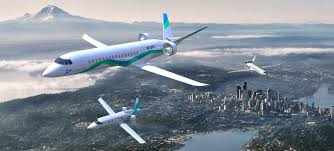Over the last 100 years, the aviation industry has tried their hand at a range of exciting new designs. There has been a shift, however from massive changes to smaller incremental improvements. IN other words, the aircraft in its most basic form it the same recognizable shape that it was when it was first invented.
Hence, tomorrow’s airplanes are probably going to look similar to the ones we all travel on today.
This design is because of the trouble in creating an all-new aircraft; something referred to as a clean-sheet design. The demand is so far beyond production that neither Airbus or Boeing would have to sell a new unit ever again. Mostly there are over 8000 aircraft in the backlog just for Airbus alone. This has left the primary two producers of aircraft, to lean on updates rather than wholly new designs. Small improvements are enough to keep airlines interested, and these designs are tried and true.
A lot of these changes are going towards more efficient engines and better wings, alongside other improvements.
Thus, the new aircraft listed below are products of small changes, but ones that are leading to better aircraft all across the board at a lower cost.
Airbus A220
The A220 is a contender that’s come out of nowhere. In actuality, it is a rebranding of the Bombardier C Series, recently acquired earlier this year.
Although this doesn’t sound particularly awe-inspiring, the narrow frame of this aircraft will speed up short flights with its new build and will come in a range of different versions for small capacity flights.
The A220 also uses a lot less fuel while extending its range for transatlantic stop-offs.
Embraer EJET E2
The E2 is effectively an extension of the original E-195 jet.
While carrying the same amount of passengers, it also has many of the perks as the A220. With 2×2 seating and no middle aisle, the E2 should provide a more spacious flight in a sleek package.
Airbus A350-1000
This super long haul aircraft will be able to fly for a massive 20 hours in one leg.
Qatar Airways will be launching the aircraft, adding in extra business class seats, for a total of 327 passengers. The interior features of the jet also prioritize comfort, with one of the perks being a shallow noise level.
Boeing 777X
The successor to their infamous 747 is one of the best and biggest Boeings across the whole production line. Its capacity enables it to take 406 passengers across multiple classes.
One of the biggest draws with this aircraft is its folding wing, allowing it the bend up at a right angle to fit into tight spaces at airports, effectively lessening its huge dimensions when being docked.
Boom Supersonic
One of the most exciting aircraft in the aviation space, Boom is a start-up company aiming to produce the only supersonic jet since the demise of the Concorde over 15 years ago.
It aims to make its first demonstration flight pending the close of 2019, and its first commercial flight in 2025.
Japan airlines are an early investor in the company, and while the Boom can only carry 55 passengers, it will fly over twice the speed of sound.
Unbelievable New Aircraft For The Future
The breadth of new aircraft being available for commercial flight within the next ten years varies widely.
What can be said though – even though the majority of these planes are making massive changes, they’re offering changes inefficiency that is collectively improving the aviation industry.
Take a look at our blog for more news on the future of commercial aviation.




